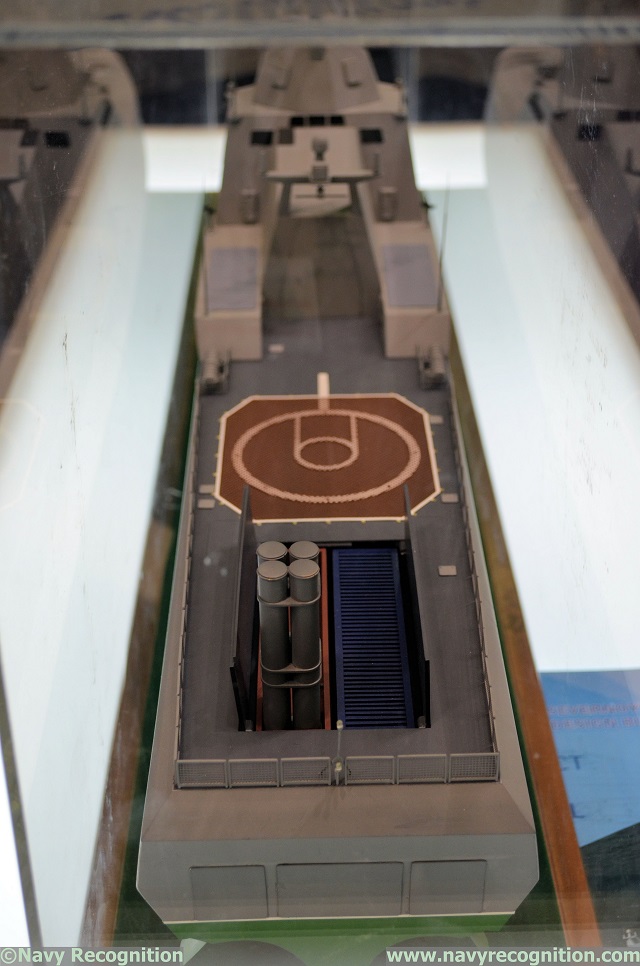 Project 22160 patrol ship model at Euronaval 2014 featuring some Kalibr-NK cruise missiles |
|||
However,
the designers said that the Project 22160 was based on the modular armament
principle, i.e. its armament can be strengthened considerably. Some of
the sea-based cruise missiles launched on terrorists in Syria from the
Caspian Sea on November 7, 2015 were fired off by Project 21631 (Buyan-M-class)
guided missile corvettes displacing 900 tons, i.e. 50% less than a Project
22160 patrol ship. After the operation, a decision was made to equip the
patrol ships in construction with Kalibr missile systems. News was announced by Gorky Shipyard First Deputy Director General Alexander Karpov in October 2015. According to him, "the successful salvoes against Islamic State targets have proven the firepower of the missiles of the type. They also require little room. The [Kalibr] system will be installed on other ships as well, particularly, project 22160 ones." Several days later, the Interpolitex 2015 show took place. A Project 22160 patrol ship model was displayed at the show, sporting Kalibr-NK cruise missiles in two standard 40-foot containers at the stern. Each container houses four missiles. However, the introduction of the Kalibr-NK missile system has radically altered the purpose of the ship. Now, it is a full-fledged warship in an utterly class and with an absolutely different purpose. Therefore, it would be logical to expect the Project 22160 ship to be reclassified as corvette soon. However, corvettes of two classes - Project 20380 and Project 20385 - have already been in construction to carry Kalibr-NK missile systems. Guided missile ships in construction are represented by two classes too - Project 21631 and Project 22800 (Karakurt class). Notably, each of the above ships is supposed to carry eight Kalibr vertical launch tubes. At the same time, the construction of a series of patrol ships for the Russian Navy remains advisable. According to expert opinion, the Russian Navy needs ships in this class indeed and has real missions for them to handle. © Copyright 2015 TASS. All rights reserved. This material may not be published, broadcast, rewritten or redistributed. |
|||
Russian Navy New Project 22160 Patrol Ships to Be Used For Wide Range of Missions
- Posted On











